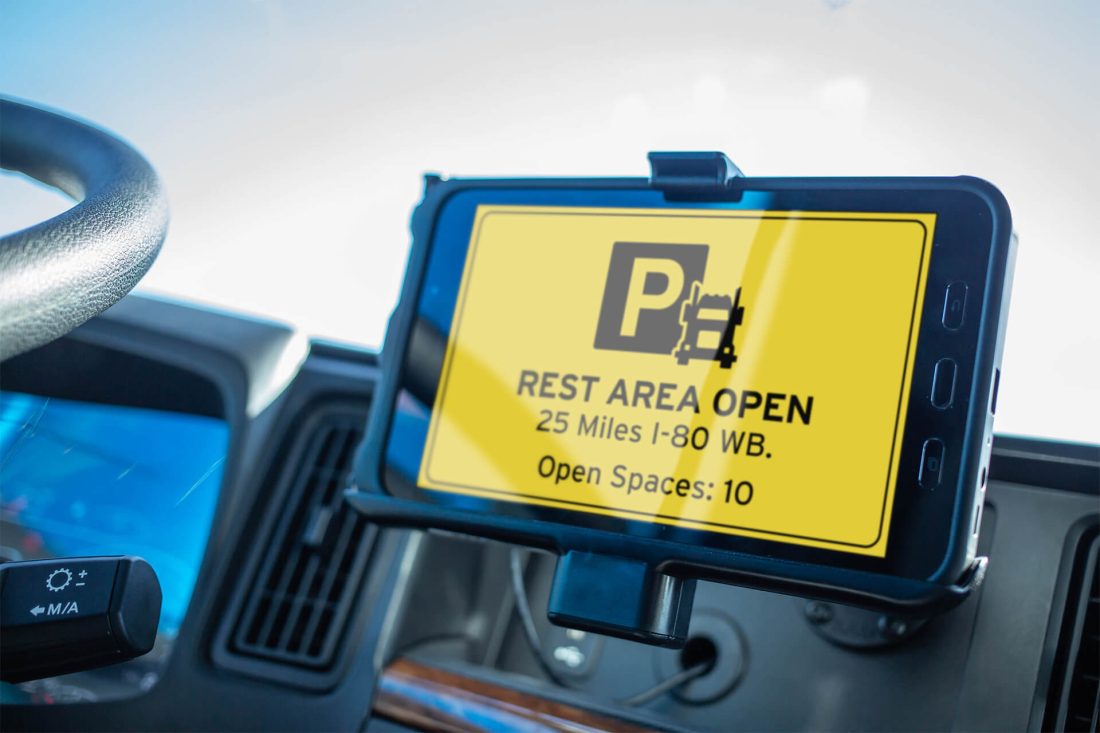The pandemic has drastically changed nearly every aspect of our lives. As Governments worldwide introduced lockdown measures aimed at curbing the coronavirus transmission, our cities will never look the same as before. People choose to spend more time at home, resulting in less traffic on roads. Knowing this you might be thinking that emptier streets usually translates to safer conditions for all road users, but data has shown that this is not the case. In the United States, early data indicates a 14% jump in fatality rates per distance driven in March 2020, according to the National Safety Council (NSC). Data also suggests rising speeding, harsh cornering and reckless driving activities since the beginning of the pandemic. The question is, why do we see a jump in dangerous driving behaviours during the pandemic despite our roads being emptier? What factors contribute to this change, and how could we refocus on road safety during high accident periods?
For businesses, aggressive driving behaviours are the leading contributing factors to roadway accidents and collisions, which can have a detrimental effect on a business’s operations. Any roadway accident could result in workers injuries and businesses paying out hefty fines, compensations or insurance premiums, which can be devastating to a business’s financial status in the long run. There is no doubt that companies should devote every effort and uphold a strong safety culture to maintain a safe workplace and protect all vehicle operator’s safety. In light of the pandemic, businesses need to preserve cash flow to secure corporations financial viability and cannot afford any operational mistakes or unnecessary spending. Cracking down on fleet drivers aggressive driving behaviours is the most effective way to reduce road accidents and cut down costs incurred from accidents. However, it requires a strategic and systematic approach to build the foundation for a sustainable and robust fleet safety culture.
We also cannot neglect the fact that humans are not perfect. Even the most cautious drivers can make mistakes that may put them and the company’s assets at risk. This is why businesses and fleet managers need to supply drivers with the right tools to serve as an extra pair of eyes on the road, protecting them from any immediate road danger. There is a wide range of vehicle safety-driven products on the market, but telematics stands the test of time and brings the best of technology to life. A unique integrated approach allows telematics to combine the power of multiple types of safety-driven technology from eye-tracking, vehicle sensing and advanced camera technology, creating one streamlined set-up that provides the ultimate all-around safety support every company is looking for. We will showcase how telematics can power your fleet operations so that fleet managers never need to worry about operation safety again.
The Dangers Of A False Sense Of Security
A false sense of security might explain why we see an increase in aggressive driving behaviours during the pandemic. Drivers are already used to congested roadways and slow traffic in urban areas prior to the pandemic. Now, under government-issued stay-at-home orders, there is a significant reduction in traffic on urban roads and highways. This inevitably causes many drivers who still need to travel to believe that emptier roads translate to easier and more comfortable driving conditions. They feel that less traffic means a much safer driving environment since the chances of encountering heavy traffic is greatly reduced. This false sense of security makes drivers believe that they are safe when they are actually not. The moment they decide to speed and commit other dangerous driving behaviours, they are not only putting themselves at high risk but also threatening the safety of other road users, such as pedestrians and cyclists.
How To Build A Robust Fleet Safety Solution With Safety-Driven Technology?
In commercial fleet operations, this false sense of security cannot be tolerated. Drivers may argue that speeding will help them to complete their work faster, but when an accident happens, the adverse impacts will far exceed what many companies can endure. The additional costs that resulted from the accident are just one side of the story, where many business owners underestimate how much an accident could hurt a business’ brand image and reputation. Imagine that a logistics freight truck is transporting an important load of time-sensitive critical shipments, and the vehicle got involved in an accident due to the drivers aggressive driving behaviours and careless driving. In this case, the shipment might get delayed or damaged, causing for a late delivery and an unhappy customer. Thus, in many ways, reinforcing safety-driven practices within the fleet is an important pillar to help your business secure customer loyalty and create a positive brand image.
Establishing strong safety-driven practices within the organization and building an extensive driver training program is just one step in shaping a zero-incident culture. In today’s world, businesses face increasingly challenging and complex tasks, which require some of the most innovative solutions to address the most pivotal concerns.
Live In-Vehicle Verbal Driver Feedback: Tailored Coaching, Perfect Driving
Wouldn’t it be great if every driver gets a virtual personalized safety assistant to provide live verbal instructions and reminders in helping them perform safe operations? If drivers forget to buckle up their seat belt prior to starting up the engine, our assistant will promptly remind drivers to do so. If drivers went over the posted speed limit, our assistant would ask the drivers to immediately slow down. This kind of seamless experience can only be found on the telematics device, and it takes your fleet driver coaching program and daily operations to the next level.
State of the art spoken alert system uses real-time text-to-speech to issue messages to drivers if a user-defined violation has been triggered. This gives fleet managers the ability to tailor the system by setting up custom rules in the telematics platform. For example, fleet managers may want vehicles to slow down in specific areas, such as at the warehouse loading bay. Traditionally, they could only rely upon drivers to follow the posted speed limit, which in many cases, drivers may not notice the signs or just ignore them. But with in-vehicle verbal driver feedback systems, fleet managers can set up custom rules such as drivers must not drive vehicles at speeds higher than a certain threshold in the warehouse zone to restrict drivers’ behaviours in any geographical setting. Now, when drivers enter or travel within the warehouse zone at any speed higher than the predefined metrics set up in the system, the in-vehicle verbal driver feedback system will warn the drivers to slow down and record a rule violation if drivers continuously disregard the warning. Any rule violation will also trigger the system to send out a notification to fleet managers and record the event on file.
We keep the device installation process of the in-vehicle verbal driver feedback system extremely simple with minimal work required. Just plug it directly into the compatible tracking device and it will become a driver’s best safety companion on the road.
Collision Avoidance Technology: Your Extra Eye On The Road
We have spent a long time pursuing the answer these important questions: What can we do to save drivers lives at the most critical moment? When drivers face imminent danger, what can we do to best protect them and maximize their survival chances? We know that the few seconds before any collision or accident are absolutely crucial, and the driver’s actions and responses could make the difference between life or death. That’s why we want to adopt the most advanced vision sensing technology to create the last safety barrier drivers can trust.
The collision avoidance technology uses cameras, radars and sophisticated software algorithms to detect objects ahead. Blending with computational power, the collision avoidance system actively and continuously scans the road ahead, analyzes the vehicle’s surrounding environment and identifies probable and imminent hazards and threats. When a threat has been detected, the system is safety-driven and instantly issues both a visual and audible alert to warn drivers of probable danger. Compared to vehicles that were not equipped with collision avoidance technology, the equipped vehicles earns driver’s a few more valuable seconds to respond to immediate dangers, which prove to be life-saving and decisive in protecting the driver safety.
The collision avoidance solutions are a form of safety-driven technology that can be used in more ways than just detecting objects around the vehicles. It has the capability of warning drivers when it detects the vehicle is about to cross the lane boundary without signaling to switch lanes. Other than detecting surrounding vehicles, the system can also detect pedestrians and cyclists, making it one of the most versatile safety tools that perfectly fit the urban road setting. We want our system to fit in your businesses workflows, and that’s why our system works in all weather conditions and has night vision capabilities for accident avoidance in any situation.
The reduced traffic on roads during the pandemic might cause drivers to drop their guard and commit dangerous behaviours. Businesses cannot overlook the risks hidden behind their drivers unsafe driving behaviours. Though strengthening the corporation’s safety culture and practices is an important step in reducing the risks, equipping your fleet with the most advanced safety-driven technologies can further eliminate the chances of accidents and cut down the burden that accidents may cause to your business. Speak with one of our fleet safety specialists to learn more about how we can help your business to achieve zero accident fleet targets.













